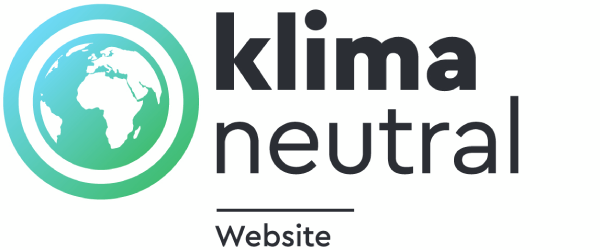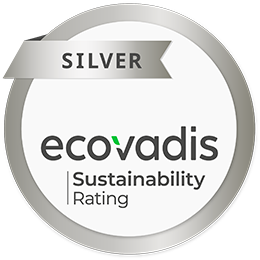We find ourselves in the year 2010 AD. Every editorial office in the country is convinced: "We know what interests our readers – we’ve got our fingers on the pulse. They’re interested in what we’re interested in!” “They all think this?” we hear you ask. Well, not quite all of them!
In a small office above a café in downtown Hamburg, a team of internet-savvy editors and IT experts were working on a completely new method. The company was called Content Fleet and their goal was to find out what people on the internet really wanted to know. And to provide them with the answers, of course.
Current Director of Content – Gaby Köchel was one of the three content managers employed at Content Fleet at that time. “With the help of our technology, we wanted to address the needs of users. In other words, we wanted to find out what they were really looking for on the internet - and to answer their questions," says Gaby. So, Content Fleet started to develop software that evaluated all data sources available on the Internet, from social media to search engines and publishers. This tool is now able to find out what users are interested in by analysing more than 100,000 sources.
Content Fleet, in its start-up phase is only too eager to share its innovative new technology with established publishers. But instead of enthusiasm, the sales staff in the editorial offices are sceptical. In fact, according to them, they don’t believe in letting software determine what they write about! For them, the digital transformation seems a long way away…
The beginning: keyword-optimized news and informative content
But, at Content Fleet the team was still convinced of their product’s potential. So, they started working overtime and typing up search engine optimized news and guides for little money. And slowly but surely the success of their content starts to prove them right. They compare the engagement rates of their articles with those of articles written by their competitors - and lo and behold - thanks to the tool, the team’s articles generated two to three times as much traffic compared to similar articles. Understandably, this made Content Fleet’s customers very happy, which meant that the demand for this kind of content grew and grew.
You only have to see how many times Content Fleet has moved over the years, to understand how ahead of the curve the company has been. Content Fleet first moved in 2011, from their inner-city location to Semperstrasse in Winterhude. Once there, the team went on to move several times within the same building each time to an even larger office space, with one of these offices being located in the basement. "When we moved to the basement, I remember a child came by once and peered in through the window,” Gaby says. “His mother then quickly pulled him away saying - 'Come away from there,’” she laughs.
Focusing on the user is a new phenomenon for many companies
Even now, most people don’t really understand what people do when they sit at their computers. However, marketing departments in large companies are becoming increasingly aware of the importance of successful content marketing. What is new for many companies, however, is the paradigm shift which Content Fleet represents. For us, it’s not about starting from the brand or the product, but about starting with the user and offering him/her as much added value as possible. "It's not about direct advertising, like “buy our cheap apples!” But rather about saying things like “our apples are excellent for your health, these five things make apples healthy - oh, and by the way, you can also get apples from us", Gaby explains.
Content Fleet is growing and constantly adapting its strategies with one eye fixed on tracking the new developments taking place in Google and companies like it. Right now, more and more departments are being created within Content Fleet including a Social Media team which will give our content an even greater reach. Thanks to our media design team, Content Fleet is now able to deliver professional photos, graphics and video content to its customers too. A separate portal team is now taking care of the technical SEO and programming of websites, too and is tasked with developing new features and delivering exceptional user experiences.
"At the end of 2014, it got really cramped in the rooms on Semperstrasse," recalls Gaby. At that time, the company had about 80 employees. The company’s takeover by Ströer in April 2015 opened up new perspectives and enabled the company to move to a new location in Hamburg-Barmbek. Two years later, Content Fleet moved its headquarters to the Ströer offices in the HafenCity, and that’s where you’ll find us today.
One company, multiple formats – all with the user in focus
"In the beginning, it was all about quantity, today our focus is on the quality of our work," says Gaby. The performance experts at Content Fleet have also derived this insight from their analyses. "Google's demands are increasingly oriented towards meeting the needs of users. Both appreciate creative and well-founded content that is easy to navigate and multimedia-based," explains Gaby.
When we started it was all about delivering simple news and guides with pictures. Today, the Content Fleet team delivers content in a variety of exciting formats: from interviews and reports to podcasts and elaborate video content. Along with our original SEO offering, Content Fleet has also been developing strong brand content, in the form of online magazines, for example, and distributing branded content via various channels.
Extensive print production is now also part of the portfolio and the company is increasingly focusing on the growing e-commerce sector.
The merger with its former competitor Testroom in 2019, has also contributed significantly to our creative development.
What has remained the same over the years is the constant focus on creating content that meets the needs of the user. In other words, we continue to uncover and satisfy their needs – most recently through the use of artificial intelligence too. Thanks to AI, not only is it possible to find out what the user is interested in, but also to understand why they are interested in this. So, we’re now creating content and tracking the success of this content with the help of sophisticated analysis tools. "Because that was, is, and remains to be our claim - we do the things that work. Especially when we can prove that they work," says Gaby.



